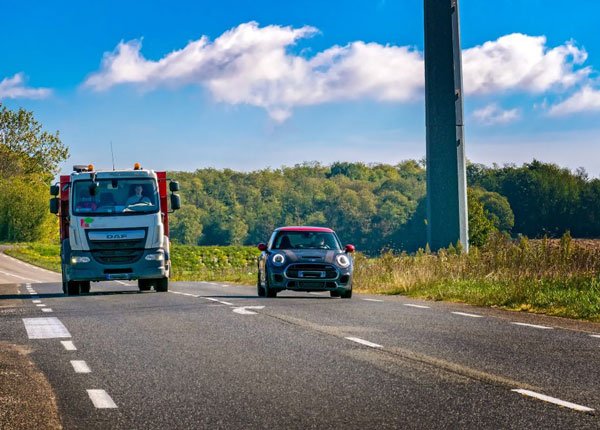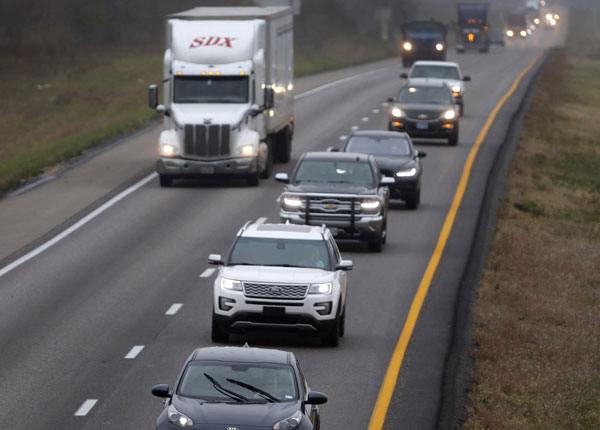
Right-of-Way Laws for Railroad Crossings: Yield to Stay Alive
Updated Oct. 20, 2020It goes without saying that motorists must exercise extreme caution when driving near railway tracks or over railroad crossings. Failure to observe proper right-of-way rules around railroad crossings can result in devastating collisions and loss of life. In the year 2014 alone, authorities recorded a total of 2,291 incidents involving a train and one or more motor vehicles, resulting in 854 injuries and 267 deaths.
Trains always have right-of-way over road vehicles at railway crossings – there are no exceptions. As a motorist, you must yield the right-of-way or risk paying for the violation with your life.
Always yield to trains
Motor vehicle drivers must always yield the right-of-way to trains. Aside from the obvious safety implications, it is a legal requirement. More importantly, drivers must yield at railroad crossings because most trains physically cannot yield. A freight train weighing 6,000 tons which is traveling at 60 mph can take around one mile to come to a complete stop, from the moment the train driver applies the emergency brakes.
A vehicle on a railroad crossing will not be visible to a train driver at one mile away (or anywhere close to that distance). This makes the chances of a collision occurring extremely high if a motorist attempts to claim right-of-way over an approaching train.
Preparing to yield at a railroad crossing
Most railroad crossings are equipped with various devices to warn motorists that they must be prepared to yield. As you approach a crossing, you will likely encounter warning signs on the roadway. Proceed with caution and remain vigilant when you see these warning signs. There may also be pavement markings prior to the crossing and a crossbuck sign at the point where the railway tracks intersect with the road.
Many railroad crossings use red flashing lights, bells and safety gates to warn motorists when a train is about to pass through. You must stop prior to the crossing when flashing red lights or warning bells are active, or when the safety gate is lowered. Often, safety gates do not stretch across the entire roadway when lowered, as this may trap vehicles on the crossing. Never drive around lowered safety gates, even if there is space for your vehicle.
Unfortunately, most railway grade crossings around the country are not equipped with warning lights, bells or safety barriers. When approaching such a crossing, you must rely on your own senses to determine whether yielding is necessary. If in doubt, yield.
Drive up to the crossing slowly, looking for trains in both directions on all tracks which run through the junction. Wind your windows down and listen for approaching trains; they are legally required to signal with a whistle 1500 feet before they pass through a crossing. If you see or hear a train you MUST yield. Trains are often closer and traveling faster than they appear.
Where to yield at railroad crossings
The right-of-way laws dictating where drivers must yield at a railroad crossing vary a little around the United States. Check your driving handbook to make sure you are working with up-to-date and locally accurate information.
In most cases, drivers must stop no less than 15 feet and no more than 50 feet from the closest rail of the tracks, in any of the following cases:
- 1

A bell, flashing red light or lowered gate indicate that a train is approaching.
- 2

You can see a train approaching, at any distance.
- 3

You hear a train whistle or emit another audible warning signal.
- 4

A traffic control operative or flagger indicates that you must stop.
Remain stopped until you are certain it is safe to proceed over the crossing. Do not move forward while any warning device is still active, or while the gates are lowered. Keep in mind that multiple trains may pass through the crossing in quick succession if there is more than one track.
Special vehicle right-of-way rules
Traffic laws state that certain types of vehicles must stop completely before passing over a railroad crossing, whether there appears to be a train approaching or not. These special vehicles include buses, school buses and any hazardous material transportation vehicle. When approaching a railway crossing with one of these vehicles ahead of you, be prepared to stop.
Passing or stopping at railroad crossings
Never stop your vehicle on railroad tracks. You may find yourself stuck when you wish to get going again. Drivers should wait until there is enough room for their vehicle on the far side of the tracks before attempting to cross, then drive over in one smooth motion.
Passing another vehicle while approaching railroad tracks is strictly prohibited. Remember that some vehicles are legally required to stop before crossing the tracks. Do not attempt to drive around a stopped vehicle at a railroad crossing.
What if you cannot yield right-of-way?
You may not be able to yield to an approaching train if your vehicle becomes stuck or blocked on the tracks. If your car stalls and you cannot get it moving, get out of the vehicle and seek assistance. When no train is approaching, you may be able to push the car over the tracks with help from other drivers. Do not attempt this if warning signals are active, or when you can see a train coming. Get yourself and all your passengers out of the car and away from the tracks as quickly as possible.




